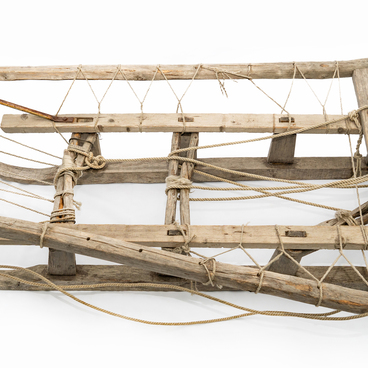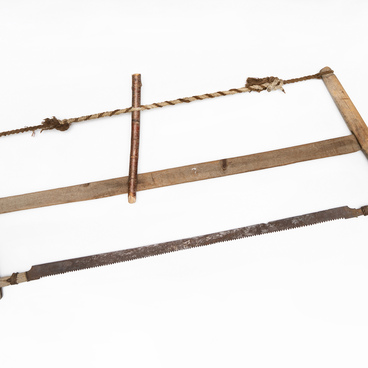In the Russian Empire, gold mining pans were often hollowed out of one single piece of raw and thick wood. Making a good work pan required great skill from the peasant, as well as the best timber — logs — without knots and cracks. The wider and more voluminous the tray was, the more expensive it was valued by Far Eastern prospectors.
Wooden pans were convenient for more coarse and constant washing of significant masses of sand. They were suitable for less experienced prospectors, since the texture — a rough surface — allowed for rougher and sharper movements during finishing without fear of washing off the grains of gold.
Such tools were assembled from four parts. All of them had to be well planed and fitted to each other; during manufacture, special attention had to be paid to the accuracy of the sides and their symmetry. On the sides, the craftsmen drilled an eye for tying the tray during movement.
The sizes of the pans were limited only by the source material and the desire of the customer or the craftsman himself, but could be quite wide. At the same time, it was easy to wash large amounts of gravel with such devices: due to the buoyancy of the wooden pans, it was easier to hold the gravel while standing in a pond.
The peasant settlers from Tambov, Oryol, Perm provinces, who settled in the area of the Nanai encampment of the Mylka on the Amur and organized the village of Permskoye, were engaged not only in hunting, postal chasing, harvesting firewood for steamships, but also gold mining.
The gold washing pan from the museum’s collection is a rectangular gray container. It was made at the end of the 19th century from a single wooden log, sawn at an angle of 45 degrees. It was no coincidence, this approach allowed the use of a larger number of wood rings: they made the pan yield more gold.
All parts of the pan are
well planed, the sides are symmetrical to each other. The exhibit was brought
from the village of Zherebtsovo. The expedition of the Museum of Local Lore
discovered it in 1979. The subject reflects the life of Russian peasant
settlers of the late 19th century.




